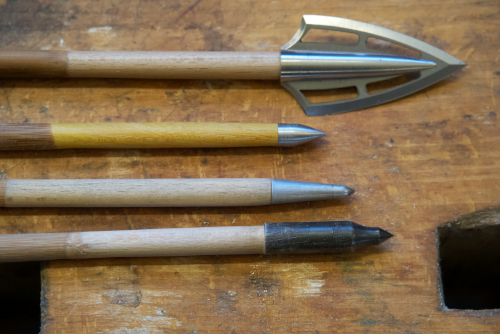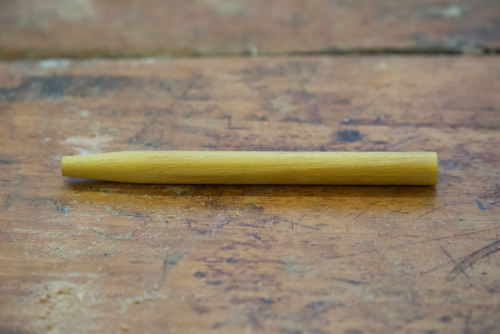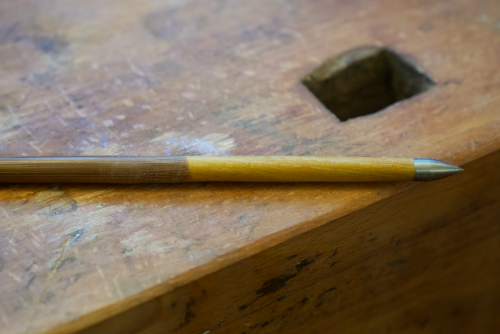Hardwood Footing out of Beech and Osage
Oetzi, the iceman, used to have an arrow in his quiver with a dogwood footing. This was 5000 years ago.
The Native Americans in North-America used amaranth, dogwood and osage as footing material and the indigenous people of Alaska used ivory.
Also in Asia footing for bamboo arrows was widespread. They all knew about hardwood footing.
Hardwood footing has several advantages:
- Robust basic material to hold arrow-points (glue-on field points or tang points). Points cannot break out so easily as they would with softer shaft material like cedar, spruce or bamboo.
- Predetermined breaking point. Footing will be replaced, rest of the shaft with fletching and nock stays fine.
- Better FOC (front of center). The distance from the balance point of an arrow to the measured centerpoint increases, because the hardwood footing is usually heavier than the common shaft material. As a result the arrow stabilizes faster.
Tapered Beech and Osage footings are available in different diameters 5/16" and 11/32".
- Single length 83mm with taper.
- Single length 83mm with taper on one side and with 4.0mm bore for a tang point on the opposite side.
- Double length 166mm with two tapers for two footings for customised length.
How to make it
- Prepare the inner cone (here it is a bamboo shaft) with the Arrow-Fix Tool.
- Slip the footing (here it is beech and osage) with the taper on and use preferably epoxy to glue it into place.
- After drying, sand the joint.
- No wood plane necessary.
- No shere force, no large repair.




